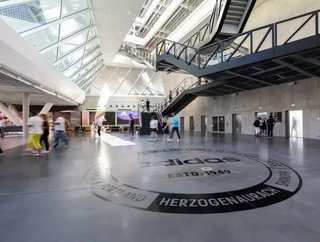Inside adidas' supply chain

Following adidas announcing its intention to move its Speedfactory technology to Asia, Supply Chain Digital takes a closer look at the footwear company’s supply chain.
Adidas has outsourced the majority of its production. Working with around 700 independent worldwide that manufacture products in over 50 countries, the company’s supply chain is global, diverse and works with a range of business partners. In 2018, the top five countries per region by number of supplier sites were:
Asia: China, Vietnam, Korea, Indonesia and India
America: United States, Brazil, Argentina, Canada and El Salvador
EMEA: Germany, Turkey, Italy, United Kingdom and Spain
The company has five broad categories of suppliers. These are:
Main suppliers: They have a direct contractual relationship with adidas for the supply of products, for either export or domestic market consumption.
Subcontractors: These are factories that have been subcontracted by adidas’ suppliers to perform manufacturing operations the main suppliers are unable to do in their own facility.
Material and other service providers: These suppliers don’t have a direct business relationship with adidas but supply goods and services to the main suppliers.
Licensees: Independent companies which manage the design, production and distribution of specific products.
Agents: Independent companies that act as intermediaries to source product manufacturing, manage the manufacturing processes and sell finished products to the company.
SEE ALSO:
Adidas maps its supply chain risk to ensure that all its suppliers produce a socially and environmentally responsible way of using its resources correctly.
It is expected that adidas’ switch to Asia will allow for better utilisation of existing production capacity and greater flexibility in product design. As part of the move, adidas will close its two Speedfactories in Ansbach, Germany and Atlanta, USA.
“The Speedfactories have been instrumental in furthering our manufacturing innovation and capabilities,” commented Martin Shankland, member of the executive board of adidas. “Through shortened development and production lead times, we’ve provided select customers with hyper-relevant product for moments that matter. This was our goal from the start. We are now able to couple these learnings with other advancements made with our suppliers, leveraging the totality of these technologies to be more flexible and economic while simultaneously expanding the range of products available.”
For more information on all topics for Procurement, Supply Chain & Logistics - please take a look at the latest edition of Supply Chain Digital magazine.
Follow us on LinkedIn and Twitter.
Image: adidas press
- The Home Depot is Enhancing CX thanks to Google CloudTechnology
- Top 10: Women in Supply Chain and Procurement in APACProcurement
- Dumarey Streamlines Suppliers with BearingPoint and JAGGAERSupplier Relationship Management (SRM)
- Explained: What is the SBTi’s Land Transport Guidance?Sustainability






